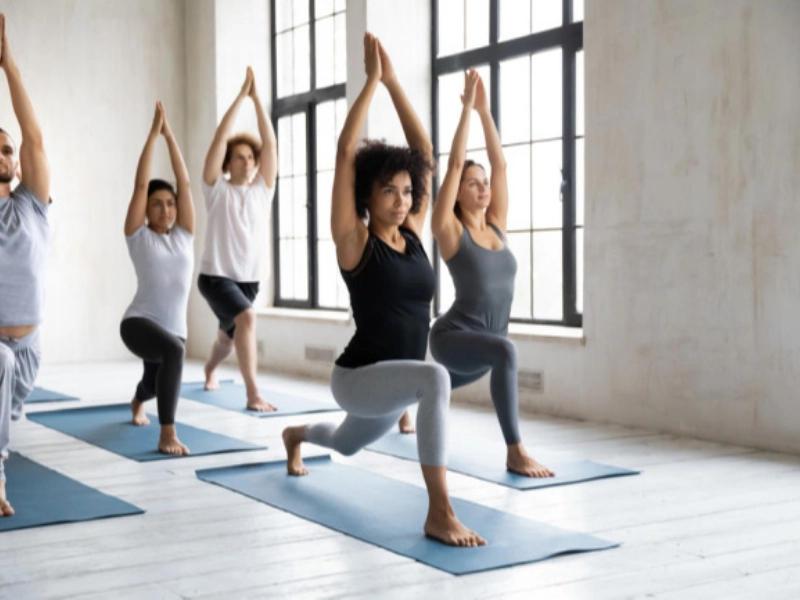Using mindfulness techniques to improve yoga focus for better practice
Being mindful involves more than just closing your eyes and sitting cross-legged for twenty minutes. A simple reminder to inhale deeply before leaving the house or taking a morning shower can suffice. Yoga not only increases mental attention but also balance and coordination through its physical component. Regular meditation and yoga practice enhanced brain function and attention, according to a study published in the Journal of Cognitive Enhancement.
1. Breathing Techniques

2. Introspection
 Physical exercise and mental concentration are combined in yoga and mindfulness meditation to create a complete practice that is good for the body and the mind. Although yoga enhances flexibility and encourages rest, mindful meditation develops an awareness of the present moment.
Yoga is an excellent environment for practicing mindfulness because the students' circumstances are always changing. Yoga helps you reframe these experiences and learn to be less reactive to them, regardless of the noise level of the traffic, your level of boredom or restlessness, your neighbour's sweat dripping on your mat, or the tightness in your hamstrings (Isaacs, 2008).
Simply focusing on your breathing is a basic mindfulness technique. As you settle into a chair or the floor, concentrate on taking calm, deep breaths. Just catch yourself when your thoughts stray and return to your breathing.
Physical exercise and mental concentration are combined in yoga and mindfulness meditation to create a complete practice that is good for the body and the mind. Although yoga enhances flexibility and encourages rest, mindful meditation develops an awareness of the present moment.
Yoga is an excellent environment for practicing mindfulness because the students' circumstances are always changing. Yoga helps you reframe these experiences and learn to be less reactive to them, regardless of the noise level of the traffic, your level of boredom or restlessness, your neighbour's sweat dripping on your mat, or the tightness in your hamstrings (Isaacs, 2008).
Simply focusing on your breathing is a basic mindfulness technique. As you settle into a chair or the floor, concentrate on taking calm, deep breaths. Just catch yourself when your thoughts stray and return to your breathing.
3. Asana
 Yoga is a complete practice that has mental and physical health advantages. It can lessen tension and encourage relaxation and inner calm while enhancing your strength, flexibility, and balance.
Yoga becomes an effective tool for developing a positive mindset and self-awareness when paired with mindfulness meditation. Yoga's contemplative nature invites you to notice your feelings and ideas as they come up without passing judgement, which lessens the tendency towards reactivity that is sometimes prevalent in our daily lives.
The purpose of asanas, or positions, is to work out every muscle, neuron, and gland in the body. Additionally, the focus on awareness and breathing fosters a healthy feeling of acceptance for your experiences in the present, which is crucial for people facing life-threatening conditions. Consequently, having a positive mental state makes you feel less stressed by unpleasant symptoms and encourages you to have a more positive outlook on getting sick. Beyond the mat, yoga cultivates a profound bond with the self that can improve emotional health.
Yoga is a complete practice that has mental and physical health advantages. It can lessen tension and encourage relaxation and inner calm while enhancing your strength, flexibility, and balance.
Yoga becomes an effective tool for developing a positive mindset and self-awareness when paired with mindfulness meditation. Yoga's contemplative nature invites you to notice your feelings and ideas as they come up without passing judgement, which lessens the tendency towards reactivity that is sometimes prevalent in our daily lives.
The purpose of asanas, or positions, is to work out every muscle, neuron, and gland in the body. Additionally, the focus on awareness and breathing fosters a healthy feeling of acceptance for your experiences in the present, which is crucial for people facing life-threatening conditions. Consequently, having a positive mental state makes you feel less stressed by unpleasant symptoms and encourages you to have a more positive outlook on getting sick. Beyond the mat, yoga cultivates a profound bond with the self that can improve emotional health.
4. Yamana
 One breathing technique that can help you focus is pranayama. It entails breathing techniques that expand lung capacity and deepen diaphragmatic breathing. Additionally, it aids in enhancing respiratory health and may be helpful for people with allergies or asthmatic bronchitis.
Sama vritti, a pranayama that involves taking equal-length breaths in and out, is one that can aid with concentration. Sit comfortably and count to four to practice this. As necessary, repeat.
Bhramari pranayama, which employs humming to quiet the mind and lessen anxiety, is another excellent pranayama. To practice this, inhale normally through your nose and then tighten your neck to produce a sound, just like you would when fogging up a mirror. Several pranayama methods are also included in Dylan Werner's Breath Sequence on Alo Moves. A 2019 study demonstrated that pranayama can improve brain function and lower stress levels. As you improve your ability to concentrate and focus, this might benefit your yoga practice.
One breathing technique that can help you focus is pranayama. It entails breathing techniques that expand lung capacity and deepen diaphragmatic breathing. Additionally, it aids in enhancing respiratory health and may be helpful for people with allergies or asthmatic bronchitis.
Sama vritti, a pranayama that involves taking equal-length breaths in and out, is one that can aid with concentration. Sit comfortably and count to four to practice this. As necessary, repeat.
Bhramari pranayama, which employs humming to quiet the mind and lessen anxiety, is another excellent pranayama. To practice this, inhale normally through your nose and then tighten your neck to produce a sound, just like you would when fogging up a mirror. Several pranayama methods are also included in Dylan Werner's Breath Sequence on Alo Moves. A 2019 study demonstrated that pranayama can improve brain function and lower stress levels. As you improve your ability to concentrate and focus, this might benefit your yoga practice.










